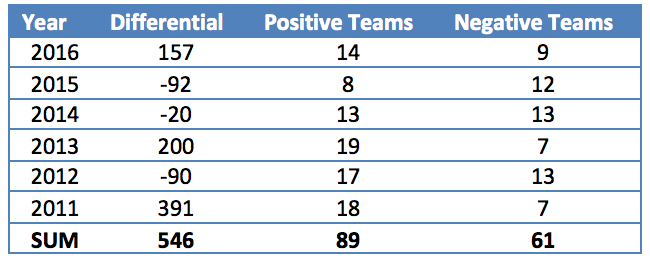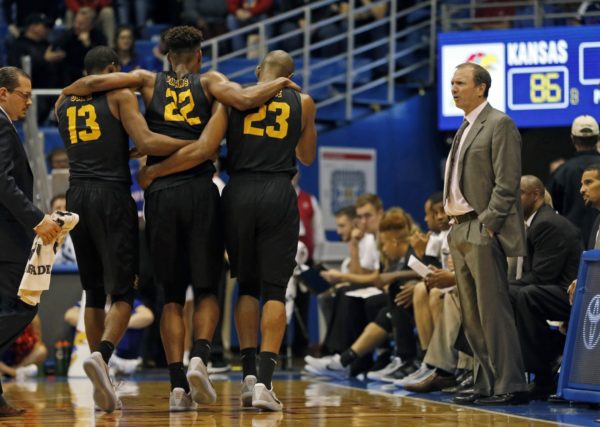Does Non-Conference Scheduling Matter?
Posted by Will Ezekowitz on January 5th, 2017As we transition into the first full week of the conference season, commentators and pundits alike will be heard discussing how the toughness of a team’s non-conference schedule prepared them for the rigors of conference play. There is a long held prevailing belief in college basketball circles that a difficult non-conference schedule forces teams to improve on the fly. The premise is that those teams, having faced several opponents of equal or better acumen, are better prepared — “battle-tested,” if you will — for the early weeks of conference play. We can call this the Long Beach State Theory, as Don Monson’s team has ranked among the nation’s top five in non-conference strength of schedule (per KenPom), since 2010. Clearly he believes that a tough schedule in November and December readies the 49ers for Big West play. But is it really true?
In order to test this assumption, KenPom helpfully ranks the difficulty of every team’s non-conference slate. If the teams with the most difficult non-conference schedules consistently see their overall ratings rise during conference play, then we will know that those teams have improved over time relative to the rest of college basketball. We limited our sample to mid-majors exclusively, for the simple reason that it’s easier to gauge actual improvement over time from the middle of the national pack (e.g., Montana playing the 14th-toughest non-conference schedule last season and raising its KenPom rating by 35 spots during conference play). In reviewing the last six years of teams finishing among the top 40 non-conference schedules, 150 mid-majors qualified for our analysis.

The results show that, of those 150 teams, 89 (nearly 60 percent) experienced improved play (positive) over the course of their conference seasons, while 61 (negative) did not. The differential column above denotes the sum of each mid-major’s difference in ranking from the end of the non-conference play to season’s conclusion (a total of +546 is suggestive of the positive impact of non-conference scheduling). Statistical tests of significance back up the eye test, as the P-value for mid-majors improving within this six-year sample is 0.019, well below the 0.05 threshold indicating significance. The test to of the differential, column, though, yields a 0.177 P-value, which is low enough to indicate a trend but not statistical significance.
So what can we conclude here? It’s fair to say that a better non-conference schedule is strongly correlated with a team’s improvement after the new year. Whether the difficult schedules taught those teams about their strengths and weaknesses, or if coaches who favor difficult schedules also happen to be better teachers — or some combination thereof — is an open question. What is not up for debate, however, is whether there is some truth to the notion that a good non-conference slate correlates with a team’s improvement down the stretch. Maybe Monson at Long Beach State has the right idea after all.










































